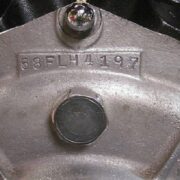Certain cars will always be classics for their aesthetics and reputation, like Corvettes, Porsches, Mustangs, and Jaguars. Then there are cars that are considered to be classic for being well-made. When opting for a new vehicle, many people will limit their browsing to cars made within the last few years, but buying a new car off the lot may not be the best way to spend your money.
New cars aren’t all bad, obviously. They have technology, are efficient, and some are good for the earth. But, unless you pay a premium, you might not get a wholesome, reliable car with all the features you’d like it to have.
Plus, at the end of the day, hacking anything “smart” isn’t impossible, especially with the right skill set and enough motivation. If all a thief needs to unlock your car is your keys being near it, there is some opportunity for a smooth steal. This is where the old, non-smart, classic cars shine again. With no technology to rely on, the functionality of these cars keeps them safe from hackers or technological error.
Some of the most reliable cars ever made, like the 1992-1995 Honda Civic, 1999-2006 Chevrolet Silverado and GMC Sierra, 1983-2011 Ford Ranger may seem to have a different aesthetic than cars today, but minus the sexy marketing, they’re just as reliable and last for years.
It’s important to keep in mind that looks are far from everything. The first car ever made wasn’t pretty and being pretty was never the intended function of a vehicle. With marketing tactics used today, it’s hard to remember that.
If you’ve gone ahead and purchased a car that isn’t considered a reliable classic, there are still things you can do to improve its’ reliability and performance.
Upgrade the parts
Cars make noises, and some are more problematic than others. It’s cheaper to replace a part than an entire car. Upgrades for comfort or terrain are also nice. Comfortable seats are a crowd pleaser and extra reinforcement for rough roads isn’t a bad idea for the countryside or rural, remote areas.
Maintenance
Everyone needs a checkup, and cars do, too. Tuneups perk up your car, and a happy car lasts longer. Even little things like pumping your tires regularly can save on fuel. Tiny, DIY fixes and repairs can make a world of difference.
Be gentle
Lots of things last longer if you don’t run them ragged. Being gentle on your automobile will add years to its life. Don’t speed, avoid rough roads and abrupt stops, don’t overload it, and other common sense practices can actually increase the lifespan of your car. It’s an impressive hunk of metal and engineering, but it can only take so much damage.
Clean it
Both on the inside and outside, cars get dirty. A little TLC goes a long way. If you paint a Pinto, it’s still a pinto but it looks better. Especially if your filter is clogged, your engine is backed up, or the spark plug is rusty, a regular cleaning and inspection is always a good idea, as it can save money and lives.
Alternative fuel system
If you want to go green, consider getting rid of gas. You may be surprised to know that cars haven’t always run on gas.—the first models actually ran on electricity. Now, cars can run on solar energy or purified used frying oil, provided the cars have special systems installed. They can also run on ethanol, natural gas, and propane. All of these could be cheaper than gas, at times, and are better for the environment than traditional gas.
Value a car for its’ value—not for its looks. Classics are classics for a reason. They never give up on you and last relatively forever. Just because it’s old and used, doesn’t mean it’s too old to be used. So next time you’re looking to upgrade your car, think your decision through, and consider a classic. It might be the best choice you make.















Comments